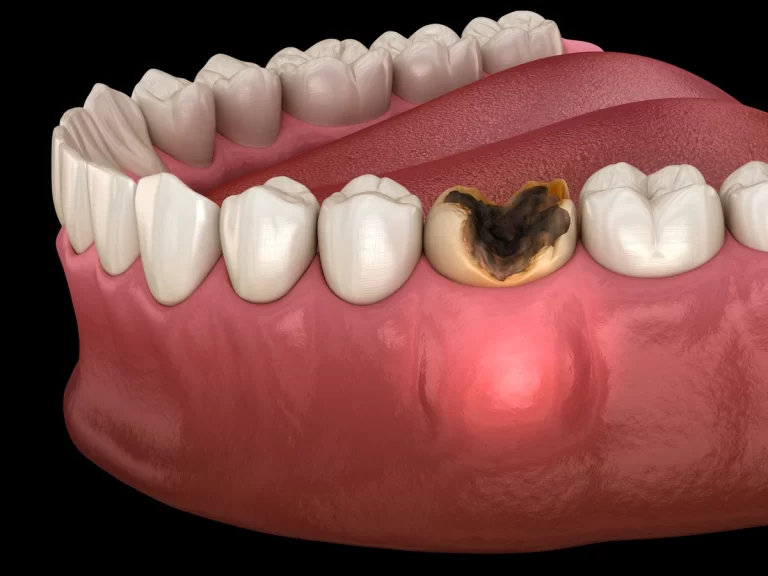In the vast expanse of our oceans, the Corvina fish emerges as a captivating marine species. Known scientifically as White Sea Bass, this aquatic marvel is celebrated for its distinctive features and holds significance in both ecological and culinary realms. Scientifically classified as Cilus gilberti, the Corvina boasts a distinctive set of characteristics that have made it a subject of both scientific inquiry and culinary admiration. From its streamlined silver physique and voracious carnivorous appetite to its crucial role in coastal ecosystems and economic significance for local communities, everything is discussed in this article.
Habitat and Distribution
The Corvina fish (Cilus Gilberti) is primarily found in coastal waters, particularly along the shores of South America and the Gulf of California. This species has a preference for warm waters and is often associated with estuaries, lagoons, and other nearshore environments. The Corvina’s habitat encompasses a variety of coastal ecosystems, making it a versatile and adaptable species.
The Gulf of California, also known as the Sea of Cortez, is recognized as a hotspot for Corvina populations. The combination of its warm temperatures and diverse marine environments provides an ideal setting for these fish to thrive. Additionally, the extensive network of estuaries and coastal areas in South America, including countries such as Peru and Ecuador, serves as an important habitat for various Corvina species.
Physical Characteristics of Corvina Fish
The Corvina fish (Cilus gilberti) exhibits distinctive physical characteristics that contribute to its identity within the marine ecosystem. Here are some key features.
Body Shape
Corvina typically has a streamlined and elongated body, which helps it navigate through the water with ease. This hydrodynamic shape is well-suited for its predatory behavior.
Coloration
The coloration of Corvina is characterized by a striking silver hue. The silver color may have subtle iridescence, adding to the aesthetic appeal of the fish. This color adaptation is common among many marine species and serves various purposes, including camouflage and communication.
Size
Corvina is of moderate size, with variations among different species. Adult Corvina fish can reach lengths that vary depending on the specific species, ranging from around 12 inches to over 30 inches. The size contributes to its role in the food chain and its interactions with other marine organisms.
Fins
The fins of Corvina are well-developed and play crucial roles in its locomotion and stability. The dorsal fin, located on the top of the fish, aids in maintaining balance, while the pectoral and pelvic fins contribute to steering and maneuvering.
Mouth and Teeth
Corvina possesses a relatively large mouth equipped with sharp teeth. This adaptation is suited for its carnivorous diet, allowing it to efficiently capture and consume prey, which typically includes smaller fish and crustaceans.
Scales
Like many fish species, Corvina is covered in scales that protect against parasites and other environmental elements. The arrangement and characteristics of these scales may vary among different Corvina species.
Eyes
The eyes of Corvina are well-developed and adapted for its predatory nature. Having keen eyesight is essential for hunting prey in a variety of light conditions within its coastal habitat.
Lateral Line
Corvina, like many fish, has a lateral line system—a series of sensory organs along its sides. This system helps it detect changes in water pressure and movement, aiding in navigation and locating prey..
Different varieties of Corvina fish
Here are a few examples of fish commonly referred to as “corvina” in various parts of the world:
Pacific Corvina (Cynoscion spp.)
Found in the Pacific Ocean along the coasts of North and South America, Pacific corvina refers to several species within the Cynoscion genus. One notable species is the Gulf corvina (Cynoscion othonopterus), found in the Gulf of California.

Black Drum (Pogonias cromis)
In some regions, the black drum is referred to as “corvina negra” or “corvina de ley.” Found in the Atlantic Ocean and Gulf of Mexico, black drums are known for their large size and distinctive black coloration.

White Seabass (Atractoscion nobilis)
Commonly known as “corvina” in California, the white seabass is a popular sportfish along the West Coast of North America. It is highly prized for its delicious flavor and is found in coastal waters from Baja California to Alaska.

Cubera Snapper (Lutjanus cyanopterus)
Referred to as “corvina” in some Central American regions, the cubera snapper is a large and powerful fish found in tropical and subtropical waters of the Atlantic Ocean, including the Caribbean Sea and the Gulf of Mexico.

Spotted Corvina (Plagioscion squamosissimus)
Found in South American rivers such as the Amazon and Orinoco, the spotted corvina is part of the Sciaenidae family. It is known for its distinctive spotted appearance and is a popular target for both commercial and recreational fishing.

Diet and Feeding Habits of Corvina Fish
The Corvina fish (Cilus gilberti) is a carnivorous species with specific dietary preferences and feeding habits that align with its role as a predator in the marine environment. Here are key aspects of the diet and feeding habits of Corvina:
1. Carnivorous Diet
Corvina is classified as a carnivorous fish, meaning that it primarily feeds on other animals. Its diet consists predominantly of small fish, crustaceans, and other invertebrates commonly found in its coastal habitat.
2. Predatory Behavior
Corvina is an active predator with well-developed hunting instincts. It relies on its agility and swiftness to pursue and capture prey in the water. The streamlined body shape and powerful fins contribute to its effectiveness as a predator.
3. Hunting Techniques
Corvina employs various hunting techniques to capture its prey. It may use ambush strategies, sudden bursts of speed, or cooperative hunting behaviors when in groups. The species adapts its hunting techniques based on the availability of prey and environmental conditions.
4. Feeding in Coastal Areas
Corvina is commonly found in coastal areas, including estuaries and lagoons. These environments are rich in biodiversity and provide abundant sources of food for Corvina, including smaller fish and crustaceans that inhabit these coastal waters.
5. Role in the Food Chain
Corvina plays a vital role in the marine food chain as a carnivorous predator. By preying on smaller fish and invertebrates, Corvina helps regulate the populations of its prey species, contributing to the overall balance of the coastal ecosystem.
6. Nocturnal Feeding
Some species of Corvina may exhibit nocturnal feeding behavior. This means they are more active and engage in hunting during the nighttime. Nocturnal feeding can be an adaptation to avoid predation and competition during daylight hours.
7. Opportunistic Feeding
Corvina is known for its opportunistic feeding behavior, taking advantage of available food sources. This adaptability allows it to adjust its diet based on the season, environmental conditions, and the abundance of specific prey items.
9. Feeding Adaptations
Corvina’s mouth is equipped with sharp teeth, which aid in grasping and consuming prey. The species may exhibit suction feeding, where it rapidly opens its mouth to create a vacuum and capture smaller prey items.
Culinary Significance of Corvina Fish
The culinary significance of Corvina fish (Cilus gilberti) extends far beyond its role in marine ecosystems. Renowned for its mild flavor, firm texture, and versatility in the kitchen, Corvina has become a sought-after ingredient in various cuisines. Here are several aspects of the culinary significance of Corvina:
Flavor Profile
Corvina is prized for its mild and sweet flavor, making it an appealing choice for a wide range of culinary preparations. Its subtle taste allows for versatility in seasoning and cooking techniques.
Texture
The flesh of Corvina is firm and flaky, providing a delightful texture that holds up well in different cooking methods. Whether grilled, baked, or pan-seared, Corvina retains its texture, making it suitable for various culinary applications.
Versatility in Cooking
Corvina’s versatility in the kitchen makes it a favorite among chefs and home cooks alike. It can be prepared in numerous ways, including grilling, baking, broiling, sautéing, or even as a key ingredient in ceviche. Its ability to absorb flavors from various seasonings and marinades enhances its adaptability to diverse recipes.
Grilling and Baking
Corvina’s firm flesh holds up well to grilling and baking methods. Whether seasoned with herbs and spices or marinated in a flavorful sauce, grilled or baked Corvina showcases its natural taste while absorbing complementary flavors.
Pan-Seared Corvina
Pan-searing Corvina creates a crispy exterior while maintaining its moist and tender interior. This cooking method allows for the development of a flavorful crust, enhancing the overall culinary experience.
Incorporation into Various Cuisines
Corvina’s neutral flavor profile makes it adaptable to different culinary traditions. It seamlessly integrates into Mediterranean, Latin American, Asian, and other cuisines, providing chefs with a canvas to create diverse and appealing dishes.
Health Benefits
In addition to its culinary appeal, Corvina offers health benefits. It is a good source of lean protein, omega-3 fatty acids, and essential nutrients, making it a nutritious choice for those seeking a balanced and healthy diet.
Economic Impact
The popularity of Corvina in the culinary world contributes to its economic significance. The demand for this fish in restaurants and seafood markets supports fishing communities and the broader seafood industry.
Economic Importance of Corvina Fish
The Corvina fish (Cilus gilberti) holds significant economic importance, particularly for coastal communities and the broader seafood industry. Here are key aspects that highlight the economic significance of Corvina:
1. Commercial Fishing
Corvina is a target species for commercial fisheries, and its capture contributes to the livelihoods of fishermen and fishing communities. The demand for Corvina in seafood markets, both local and international, drives commercial fishing activities.
2. Local Economy
Coastal communities that rely on fishing view Corvina as a valuable economic resource. The sale of Corvina in local markets provides income for fishermen and supports the local economy, contributing to the financial well-being of these communities.
4. Export Industry
In regions where Corvina is abundant, there is often an opportunity to export this fish to international markets. The export of Corvina can generate foreign exchange earnings for the country, contributing to its overall economic growth.
5. Sustainable Fisheries Management
The economic importance of Corvina emphasizes the need for sustainable fisheries management. Governments and regulatory bodies implement measures to ensure the responsible harvesting of Corvina, balancing economic interests with long-term conservation goals.
6. Food Security
Corvina contributes to food security by providing a source of protein for local communities. In regions where fish is a dietary staple, the availability of Corvina helps meet nutritional needs and supports food security initiatives.
Conclusion
In conclusion, the Corvina fish, with its silvery allure and intricate biology, stands as a testament to the remarkable diversity of marine life. Our exploration has unveiled its habitat in the coastal waters of South America and the Gulf of California, emphasizing its adaptability and integral role in maintaining the balance of coastal ecosystems. The physical characteristics of the Corvina, from its streamlined body to its keen eyes and sharp teeth, underscore its evolutionary adaptations as a formidable carnivorous predator.
Beyond the scientific realm, the Corvina fish weaves itself into the cultural fabric of coastal communities, becoming a symbol of tradition and folklore. Its economic importance transcends borders, supporting the livelihoods of fishermen and contributing to the economic prosperity of regions where it is abundantly found. The culinary significance of Corvina further enhances its allure, offering a delectable journey from ceviche to grilled delicacies that captivates palates around the world.
In a world where coastal ecosystems face various challenges, understanding and safeguarding species like the Corvina are essential. Let the tale of the Corvina serve as a reminder of the beauty, significance, and fragility of our oceans. In the ongoing narrative of marine conservation, the Corvina fish plays a pivotal role—a shimmering emblem of the need for harmony between human activities and the vibrant ecosystems that shape our planet’s blue heart.
For More Informative Articles, Keep Visiting Formal Words







